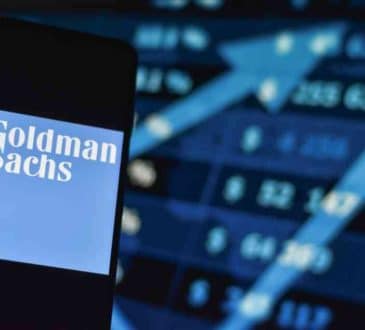Dreaming of exit? Take a minute

With today’s long fundraising cycles and low chances of closing a round, founders of innovative technology startups who are frustrated by all the rejection may be inclined to dreams of cashing out. Given the massive drop in venture capital exits in the last two years, founders should set exit fantasies aside and instead use this time to learn from entrepreneurs who have already exited. Preparation will ensure the best outcome for exit—and life after exit.
The worst time to look for a buyer is in a crunch or a downcycle. Lars and Jens Rasmussen had a mapping software startup, but after a year without salaries and no investor interest, they sold to Google in haste, for much less than comparable startups, even though their product became Google Maps.
To avoid a fire sale, Jon Hirschtick (Founder and former CEO of SolidWorks and Onshape CAD companies) recommends developing relationships with investors, competitors, and public market professionals long before embarking on a sale. Mark Ethier was Cofounder of audio production software company iZotope, which won two Emmys and an Oscar for work in TV and film. Ethier spent years educating potential investors, investment bankers and buyers. This preparation, along with their high growth and profitability, led to two unsolicited offers within a week.
A sale or offering of an innovative technology startup can hinge on intellectual property. Eran Egozy, CTO/Co-Founder of Harmonix Music Systems which developed Guitar Hero, says, “When you’re drafting patents, it all seems useless, but it really matters later. What had felt like an academic exercise had very real impact on our financial future.” Other documents, like IP assignments and releases, can easily get lost in the startup mayhem. Egozy shares, “We were hours from closing, but we needed a vendor release and we couldn’t find the guy.” Keeping legal paperwork organized will help avoid deal snags.
For an entrepreneur in the thick of battle, exit represents salvation. After so many rejections from investors and customers, a company sale or public offering promises to prove all the skeptics wrong, delivering evidence of success to the world and an opportunity to swap out Kendall Jackson for Chateau Lafite.
Beyond the boost to the founder’s ego and bank account, exit also rewards the employees who believed in the founder’s vision. Greg Mark (Founder of 3D Printing company Markforged which went public through a SPAC) says his offering was not elation but relief, after he’d pulled 350 people out of well-paying jobs to tie their financial future to Markforged. “Many college tuitions were paid. It was beautiful.”
With so much at stake, founders can be misled into believing that all they care about is valuation. Exited entrepreneurs, however, suggest contemplating what will happen to the startup—and the founder—after the liquidity event.
Eran Egozy, who had been looking for work-life balance, recounts, “After selling, I was still CTO, so I couldn’t take more than a week off.” Founders who stay after a sale may confront culture clash. “The buyer tried to integrate us,” Egozy says. “They didn’t understand our free weekly lunch or our generous health insurance plan. Luckily, they were far away, and we worked hard to retain our culture.”
Exit is more than just money. Many founders stay long beyond any earn-out period post-acquisition, because they have a passion for their technology, and they want their products to make a difference in the world. Rasmussen stayed for seven years after sale, Egozy for twelve years, and Hirschtick for fourteen. In fact, many exited startups, like Arp and Harmonix, are later sold back to their cashed-out founders who reinvest in order to drive impact.
Impact starts with customers. For Ethier, it was “meeting remarkable humans producing creative work with our products.” Egozy says, “Guitar Hero made an imprint on American culture. People tell me how it changed their lives: took them out of their shells or drove them to take up a real instrument.” Although Lars Rasmussen’s startup was undervalued when he cashed out, he doesn’t regret the sale. Google maps today counts 2 billion users. Talk about impact.
Impact also relates to employees. David Friend (serial entrepreneur and CEO of Wasabi Technologies) says, “A core group of engineers went with me from one startup to the next.” Ethier adds a sentiment that is common among founders: “The best part was being a team, accomplishing something together.” To protect the team from possible job loss after a sale, employment agreements should be negotiated during the sale process.
Years after founding, entrepreneurs must transition from being creators to being operators. Some miss the early days and choose to leave, often upon sale of the business. Deciding when to leave requires the founder to assess their motivations, where they are in their career, their professional limitations, and whether they’re still having fun.
For a founder who wants to continue leading, a public offering (through direct listing, IPO or SPAC) sounds like an ideal outcome. It provides cash that has likely been the biggest constraint for the startup, but it comes with new, different constraints. Friend explains, “When you go public, it’s hard to branch out because the stock market will whack you if you spend too much on R&D.” Entrepreneurs can get frustrated when a buyer or the public markets undermine their corporate culture, their vision for the technology, or their ability to be their own boss.
The moment when the founder cashes out and also leaves the startup might seem like the end of the hero’s journey, but in fact both the entrepreneur and the company live on. The founder now has time for family, friends and pet projects, but after all the late nights pursuing a passion for a technology, the entrepreneur may feel lost or depressed without their purpose, their identity, their team, and the flurry of activity. The loss can be a massive blow. Ethier says, “The biggest surprise of exit is how long it takes to reset.”
When an entrepreneur steps down and loses their place in the world, they may rush to fill the void. Veteran entrepreneurs advise not to commit to anything new too fast.
In this state of lost identity, the founder must now witness their “baby” out on its own. While the negotiation likely focused on valuation, the founder may be struck by the significance of where the company landed. The buyer may integrate the startup, eradicating the founder’s beloved brands. Without the founder’s vision, product innovation may stall.
“The buyers were a bunch of suits that didn’t understand the rock-and-roll business,” says Friend about the sale of Arp, his synthesizer startup. The valuable essence of a startup—compensation programs, organizational structure and cultural quirks—can be destroyed by the wrong buyer. Mark explains, “Exit is neither marriage nor divorce. It’s dropping your kid off at college, and praying he doesn’t make a bunch of bad decisions and end up a crack-head.”
With proper preparation, the buyer may drive the startup to heights that would’ve been impossible as a standalone, creating a winning transaction for both buyer and seller. In both of Hirschtick’s exits, most of the senior team stayed, or came back after leaving, and the acquired startups have thrived.
As important as preparation is, exit should not drive corporate strategy. Mark says, “Run the business as if you’re going to own it forever. If you create something of value, somebody will want to buy it.” Egozy adds, “If you think too much about exit, you start making decisions for appearance.” In fact, most businesses don’t have huge exits, if any at all. Companies that grow to profitability without excessive equity dilution can still generate solid returns for the founders through ongoing cash flow.
When an opportunity to sell arises, the way to get the highest valuation is to lead with vision, not numbers. Hirschtick says, “Tell the corporate development person, I’m sure we can work out the numbers, but I want to talk about changing the world. Who do I talk to about that? You’ll end up talking with the CEO about a shared vision for the future.” Friend recommends that founders without wealth jump at a liquidity opportunity, because another idea will always come along, and “it’ll be more fun next time if you’re not worried about feeding your family.” Lots of entrepreneurs get rich on paper and then go bust. “To put a win on the scoreboard, even a 2-3x return, gives you credibility for the next thing.”
When contemplating exit, founders seeking to have impact should look beyond valuation to issues of culture fit and integration. Preparing for exit starts before a buyer is identified, and should include plans for the founder, the products, the customers, and the employees. Exit is not the essence of the startup experience, nor the end of the experience, even after the entrepreneur leaves the company. As Hirschtick says, “Exit is just one possible step somewhere in the middle of a long journey.”
Written by Marina Hatsopoulos.
Have you read?
Countries With The Highest And Lowest Average Salaries, 2023.
Best Fashion Schools In The World.
Best Business Schools In The World.
The World’s Best CEOs And C-Suite Executives, 2023.
World’s Most Influential and Innovative Companies.
World’s Best Hospitality And Hotel Management Schools.
Add CEOWORLD magazine to your Google News feed.
Follow CEOWORLD magazine headlines on: Google News, LinkedIn, Twitter, and Facebook.
This report/news/ranking/statistics has been prepared only for general guidance on matters of interest and does not constitute professional advice. You should not act upon the information contained in this publication without obtaining specific professional advice. No representation or warranty (express or implied) is given as to the accuracy or completeness of the information contained in this publication, and, to the extent permitted by law, CEOWORLD magazine does not accept or assume any liability, responsibility or duty of care for any consequences of you or anyone else acting, or refraining to act, in reliance on the information contained in this publication or for any decision based on it.
Copyright 2024 The CEOWORLD magazine. All rights reserved. This material (and any extract from it) must not be copied, redistributed or placed on any website, without CEOWORLD magazine' prior written consent. For media queries, please contact: info@ceoworld.biz
SUBSCRIBE NEWSLETTER








